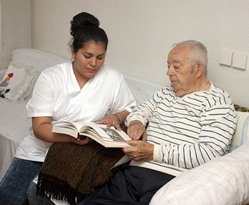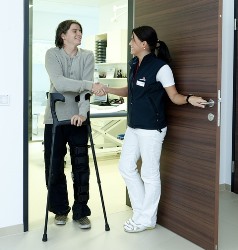How to Select the Best Nursing Training Program near Welcome Minnesota
 Searching for the right nursing college near Welcome MN may feel like a complex endeavor, especially if you have no idea what to look for in a good degree program. As you may presently understand, to practice as a registered nurse, you need to obtain the necessary education and training to become licensed. So it is essential that you research and evaluate the qualifications of each school you are contemplating before enrolling in your final selection. Unfortunately, too many future students base their determination solely on the price of tuition and the distance of the school. Deciding on the least costly program or the one that is nearest to your home is undoubtedly not the most reliable way to select a nursing program. There are several essential additional considerations to investigate before you determine where to attend classes. But before we delve into that checklist, let’s first review the nursing degree options that are offered as well as what the functions of nurses are in our medical system.
Searching for the right nursing college near Welcome MN may feel like a complex endeavor, especially if you have no idea what to look for in a good degree program. As you may presently understand, to practice as a registered nurse, you need to obtain the necessary education and training to become licensed. So it is essential that you research and evaluate the qualifications of each school you are contemplating before enrolling in your final selection. Unfortunately, too many future students base their determination solely on the price of tuition and the distance of the school. Deciding on the least costly program or the one that is nearest to your home is undoubtedly not the most reliable way to select a nursing program. There are several essential additional considerations to investigate before you determine where to attend classes. But before we delve into that checklist, let’s first review the nursing degree options that are offered as well as what the functions of nurses are in our medical system.
Request Free Information on Nursing Schools Below
Nursing Degree Options
There are multiple degrees offered to become a nurse. And in order to become a Registered Nurse (RN), a student must attend an accredited school and program. A nursing student can obtain a qualifying degree in just 2 years, or advance to obtain a graduate degree for a total of 6 years. Following are some short summaries of the nursing degrees that are offered to aspiring students in the Welcome MN area.
- Associates Degree. The Associate Degree in Nursing (ADN) is normally a two year program offered by community colleges. It readies graduates for an entry level job in nursing in healthcare facilities such as hospitals, clinics or nursing homes. Many utilize the ADN as an entry into nursing and afterwards obtain a more advanced degree.
- Bachelor’s Degree. The Bachelor of Science in Nursing (BSN) provides more expansive training than the ADN. It is normally a four year program offered at colleges and universities. Licensed RNs may be qualified to complete an accelerated program based on their prior training or degree and professional experience (RN to BSN). Those applying to the program might desire to progress to a clinical or administrative position, or be more competitive in the job market.
- Master’s Degree. The Master of Science in Nursing (MSN) is commonly a two year program after attaining the BSN. The MSN program provides specialization training, for instance to become a nurse practitioner or focus on administration, management or teaching.
When a graduating student has acquired one of the above degrees, he or she must pass the National Council Licensure Examination for Registered Nurses (NCLEX-RN) in order to become licensed. Other requirements for licensing fluctuate from state to state, so be sure to get in touch with the Minnesota board of nursing for any state mandates.
Click Here to Get Free Information on Nursing Schools Near You!
Why Enter the Nursing Profession?
 Nurses are an essential part of a Welcome MN medical team, and for a number of patients, their primary care providers. A nursing career can lead to many opportunities, including research, health care education and specialty areas of practice. Nurses enter the profession for many reasons, the most significant are its practical and personal advantages. Nurses provide direct, one-on-one care to patients. Many patients in a hospital or home care setting have more contact with nurses than with doctors. Nurses commonly go into the profession due to a passion to tend to the needs of patients, including in instances of short-term treatment of illness and long-term care of chronic conditions. This human side of the health profession, as opposed to the analytical or research related aspects, is appealing to many who elect to enter into a nursing career. Nurses have a wide range of applicable skills and can choose from an assortment of work environments, such as home care facilities, physician’s offices, medical clinics, community centers and hospitals. Also, nurses can advance into a number of specializations, including addictions, critical care, neonatology and genetics. While most nurses deliver primary patient care, others choose to be educators, policy consultants or pharmaceutical representatives.
Nurses are an essential part of a Welcome MN medical team, and for a number of patients, their primary care providers. A nursing career can lead to many opportunities, including research, health care education and specialty areas of practice. Nurses enter the profession for many reasons, the most significant are its practical and personal advantages. Nurses provide direct, one-on-one care to patients. Many patients in a hospital or home care setting have more contact with nurses than with doctors. Nurses commonly go into the profession due to a passion to tend to the needs of patients, including in instances of short-term treatment of illness and long-term care of chronic conditions. This human side of the health profession, as opposed to the analytical or research related aspects, is appealing to many who elect to enter into a nursing career. Nurses have a wide range of applicable skills and can choose from an assortment of work environments, such as home care facilities, physician’s offices, medical clinics, community centers and hospitals. Also, nurses can advance into a number of specializations, including addictions, critical care, neonatology and genetics. While most nurses deliver primary patient care, others choose to be educators, policy consultants or pharmaceutical representatives.
Registered Nurse Job Duties
 Registered nurses are the most significant occupation in the healthcare delivery system. RNs practice in numerous different medical settings, such as Welcome MN hospitals, family practices, outpatient clinics, nursing homes and even schools. Their general function is to assist doctors in the treatment of their patients. However, the exact duties of a registered nurse will depend on their job or area of expertise as well as where they work. Some of the functions of an RN may include:
Registered nurses are the most significant occupation in the healthcare delivery system. RNs practice in numerous different medical settings, such as Welcome MN hospitals, family practices, outpatient clinics, nursing homes and even schools. Their general function is to assist doctors in the treatment of their patients. However, the exact duties of a registered nurse will depend on their job or area of expertise as well as where they work. Some of the functions of an RN may include:
- Administering medications
- Observing patients
- Performing physical examinations
- Managing care
- Supervising LPNs, LVNs and nurse aides
- Educating patients and their families
- Maintaining health records and charts
Nurses with a higher degree may have more complex job duties and accountabilities. Nurse practitioners (NP), as an example, must hold a Master’s Degree and often work more independently than their RN counterparts. They can administer primary or specialty care services, prescribe medications, and diagnose and treat common illnesses or injuries.
Online Nursing Classes
 Attending nursing programs online is becoming a more preferred way to get training and acquire a nursing degree. Some schools will require attendance on campus for a component of the training, and almost all programs require a specified number of clinical rotation hours completed in a local healthcare center. But since the balance of the training can be accessed online, this method may be a more convenient answer to finding the free time to attend school for many Welcome MN students. Pertaining to tuition, a number of online degree programs are cheaper than other on campus options. Even supplementary expenses such as for commuting and study materials may be lessened, helping to make education more affordable. And a large number of online programs are accredited by organizations such as the Commission on Collegiate Nursing Education (CCNE) for BSN and MSN degrees. So if your job and household responsibilities have left you with little time to pursue your academic goals, it could be that an online nursing training program will make it easier to fit a degree into your busy schedule.
Attending nursing programs online is becoming a more preferred way to get training and acquire a nursing degree. Some schools will require attendance on campus for a component of the training, and almost all programs require a specified number of clinical rotation hours completed in a local healthcare center. But since the balance of the training can be accessed online, this method may be a more convenient answer to finding the free time to attend school for many Welcome MN students. Pertaining to tuition, a number of online degree programs are cheaper than other on campus options. Even supplementary expenses such as for commuting and study materials may be lessened, helping to make education more affordable. And a large number of online programs are accredited by organizations such as the Commission on Collegiate Nursing Education (CCNE) for BSN and MSN degrees. So if your job and household responsibilities have left you with little time to pursue your academic goals, it could be that an online nursing training program will make it easier to fit a degree into your busy schedule.
What to Ask Nursing Schools
 Now that you have determined which nursing degree to enroll in, as well as if to attend your classes on campus near Welcome MN or on the internet, you can utilize the following guidelines to begin narrowing down your options. As you undoubtedly are aware, there are a large number of nursing schools and colleges within Minnesota and the United States. So it is necessary to decrease the number of schools to select from to ensure that you will have a manageable list. As we already mentioned, the location of the school as well as the cost of tuition are probably going to be the primary two factors that you will consider. But as we also stressed, they should not be your sole qualifiers. So prior to making your ultimate selection, use the following questions to evaluate how your selection measures up to the other programs.
Now that you have determined which nursing degree to enroll in, as well as if to attend your classes on campus near Welcome MN or on the internet, you can utilize the following guidelines to begin narrowing down your options. As you undoubtedly are aware, there are a large number of nursing schools and colleges within Minnesota and the United States. So it is necessary to decrease the number of schools to select from to ensure that you will have a manageable list. As we already mentioned, the location of the school as well as the cost of tuition are probably going to be the primary two factors that you will consider. But as we also stressed, they should not be your sole qualifiers. So prior to making your ultimate selection, use the following questions to evaluate how your selection measures up to the other programs.
- Accreditation. It’s a good idea to make sure that the degree or certificate program along with the school is accredited by a U.S. Department of Education acknowledged accrediting agency. Besides helping verify that you receive a premium education, it may assist in securing financial aid or student loans, which are often not offered in Welcome MN for non-accredited schools.
- Licensing Preparation. Licensing criteria for registered nurses differ from state to state. In all states, a passing score is needed on the National Council Licensure Examination (NCLEX-RN) together with graduation from an accredited school. Some states require a specific number of clinical hours be completed, as well as the passing of additional tests. It’s essential that the school you are enrolled in not only delivers an excellent education, but also readies you to satisfy the minimum licensing requirements for Minnesota or the state where you will be practicing.
- Reputation. Check online rating companies to see what the reviews are for each of the schools you are looking into. Ask the accrediting organizations for their reviews as well. Additionally, contact the Minnesota school licensing authority to determine if there are any complaints or compliance issues. Finally, you can contact some Welcome MN healthcare organizations you’re interested in working for after graduation and ask what their assessments are of the schools as well.
- Graduation and Job Placement Rates. Find out from the RN colleges you are looking at what their graduation rates are as well as how long on average it takes students to finish their programs. A low graduation rate may be an indication that students were dissatisfied with the program and dropped out. It’s also important that the schools have high job placement rates. A high rate will not only confirm that the school has a superb reputation within the Welcome MN healthcare community, but that it also has the network of contacts to help students gain a position.
- Internship Programs. The best way to obtain experience as a registered nurse is to work in a clinical setting. Virtually all nursing degree programs require a certain number of clinical hours be completed. Various states have minimum clinical hour prerequisites for licensing as well. Check if the schools have a working relationship with Welcome MN hospitals, clinics or labs and assist with the placement of students in internships.
Nursing Classes Welcome MN
Accelerated Nursing Courses Near Me Welcome Minnesota
Deciding on the ideal nursing school is perhaps the most crucial first step to beginning a new career in the health care industry. There are numerous factors that you must consider when choosing a nursing college. These factors will be prioritized differently contingent on your current career objectives, obligations, and economic status. As we have stressed within this content, it is critical that you pick a nursing school and a degree program that are both accredited and have excellent reputations within the healthcare community. You originally came to this website due to your interest in Accelerated Nursing Courses Near Me and wanting more information on the topic Evening RN Schools.. However, by utilizing our checklist of qualifying questions, you will be able to create a short list of schools to pick from so that you can make your final selection. And with the proper degree and training, combined with your hard work and ambition to succeed, you can become a practicing nurse in Welcome MN.
More Minnesota Nursing Locations
Welcome, Minnesota
According to the United States Census Bureau, the city has a total area of 1.47 square miles (3.81 km2), all of it land.[9] The original description of the site was "Section 1, Township 102, Range 32."[10]
As of the census[2] of 2010, there were 686 people, 310 households, and 193 families residing in the city. The population density was 466.7 inhabitants per square mile (180.2/km2). There were 341 housing units at an average density of 232.0 per square mile (89.6/km2). The racial makeup of the city was 99.9% White and 0.1% African American. Hispanic or Latino of any race were 2.9% of the population.
There were 310 households of which 23.9% had children under the age of 18 living with them, 47.4% were married couples living together, 9.0% had a female householder with no husband present, 5.8% had a male householder with no wife present, and 37.7% were non-families. 32.6% of all households were made up of individuals and 14.8% had someone living alone who was 65 years of age or older. The average household size was 2.21 and the average family size was 2.77.
